I’ve had the privilege, since reading Vanessa Winn’s latest novel Trappings, of chatting with her via email about our shared love of history and writing. Both Vanessa’s novels are set in Victoria, BC, which we called home for four years, and are about women in the 1800s, whom I know are notoriously hard to interview because so often they remain hidden behind their male counterparts. I’m delighted that Vanessa has put in the work to bring these women alive to us in her novels.
I was also delighted to ask her some questions about her books to share with you. Here’s more from Vanessa about why she wrote Trappings and The Chief Factor’s Daughter, the ups and downs of writing, and what she’s working on next!
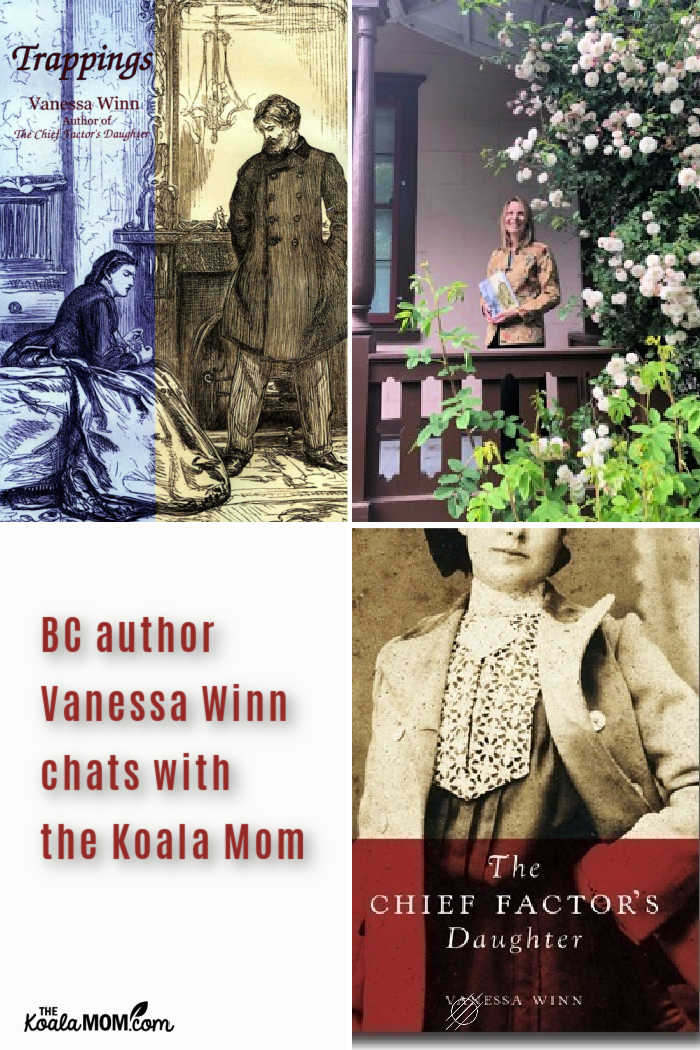
TKM: Tell us a bit about Vanessa Winn!
Vanessa Winn: I’ve written for most of my life, since childhood when I penned my first short stories. The 19th century has long intrigued me, particularly when I began reading literature. I felt an affinity for the era, which deepened while studying English at university. I took some courses in Canadian lit, but felt the West Coast was underrepresented in earlier times.
TKM: Tell us a bit about your novels.
Vanessa: My novels are strongly based in history. I’m interested in people who don’t typically get a lot of focus from historians, such as those who are mostly seen in supporting roles. I want to coax them out onto centre stage, and put the well-known players in the wings instead. Changing this perspective, changes my perspective, too. I start to see history differently – how it might look from the margins.
TKM: What inspired you to write your books?
Vanessa: I wanted to read novels about women set here in Victoria during past times, but there weren’t many. I had always wanted to write a novel, so decided to do a neo-Victorian one myself. Then the research began. The people who I learned about in the fur trade fascinated me and their stories came to life – more so than any fictional characters I could imagine. That they were real, gave them an added dimension.
TKM: How did you decide whose point of view to tell this story from?
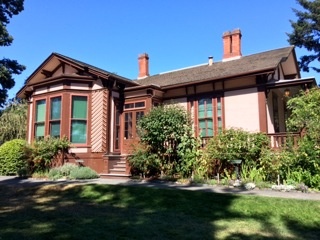 Vanessa Winn: I felt compelled to write from the perspective of women, and in particular the daughters of the fur trade, whose voices are often silent in history. For Trappings, I found there wasn’t a lot of information about the early years of Point Ellice House (a National Heritage Site), where Kate lived. She and her husband received the property as a wedding gift from her father, a Hudson’s Bay Company chief factor, shortly before he died. The focus of the museum has been the later family to live there, and Kate’s story was untold. The more I read about Kate’s eventful years in the 1860s, a time of turmoil in BC, the more I sensed there was enough for a novel.
Vanessa Winn: I felt compelled to write from the perspective of women, and in particular the daughters of the fur trade, whose voices are often silent in history. For Trappings, I found there wasn’t a lot of information about the early years of Point Ellice House (a National Heritage Site), where Kate lived. She and her husband received the property as a wedding gift from her father, a Hudson’s Bay Company chief factor, shortly before he died. The focus of the museum has been the later family to live there, and Kate’s story was untold. The more I read about Kate’s eventful years in the 1860s, a time of turmoil in BC, the more I sensed there was enough for a novel.
TKM: Is your main character at all like you?
Vanessa: My empathy for Kate grew with writing her story. I understood some of her losses. My father died while I was writing Trappings, and I have experienced chronic ill health and other losses. I kept thinking how difficult this would have been in the Victorian era, with more restrictions on women. I sensed she had a strong spirit, and knew what it means to be diminished, while the essence of that spirit survives. I love Kate’s arched brow in her photograph and felt a kinship with that expression – perhaps an ironic way of viewing the world. Though I share a sense of her spiritual journey, Kate had something I don’t – a strong faith in the afterlife. I expect it was a comfort for her.
TKM: Who is your favourite author and why?
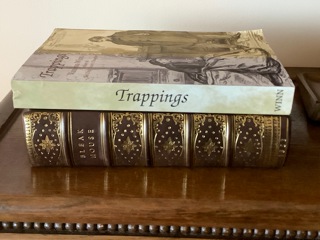 Vanessa: I don’t have one favourite author, but there are a couple of standouts. Charles Dickens was a strong influence in Trappings, in particular Bleak House, which I read while writing, twice. Once I learned that Governor Seymour called his Victoria vice-regal residence Bleak House (because he didn’t want to live there!), the parallels and allusions kept coming. Dickens’ split-narration between a young woman and an omniscient narrator is brilliant. I also appreciate that many of Dickens’ memorable characters are based on real people, as were events.
Vanessa: I don’t have one favourite author, but there are a couple of standouts. Charles Dickens was a strong influence in Trappings, in particular Bleak House, which I read while writing, twice. Once I learned that Governor Seymour called his Victoria vice-regal residence Bleak House (because he didn’t want to live there!), the parallels and allusions kept coming. Dickens’ split-narration between a young woman and an omniscient narrator is brilliant. I also appreciate that many of Dickens’ memorable characters are based on real people, as were events.
George Eliot’s Middlemarch is another contender – an insightful portrayal of several couples in a small town, ranging from the tragic to the comic. She conveys a remarkable psychological depth among a diverse cast of characters.
TKM: What was the most challenging part of writing your novels, and how did you overcome that challenge?
Vanessa Winn: Gathering history from so many different sources, and then weaving it together into a cohesive whole was a challenge in writing my novels. I enjoy reading between the lines to find women’s history, yet it can be hard to wrestle different parts into the known timeline in a way that makes narrative sense. I started with a framework of events, looking for dramatic scenes, and gradually added layers to flesh it out. I looked for sources of potential tension amongst the characters and events, paying close attention to significant dates for women, such as birthdays or anniversaries of deaths. For example, I noticed a strange coincidence of ship wrecks and the deaths of children. Perhaps this points to the frequency of both in the 19th century, but it was eerie when connected to the same family.
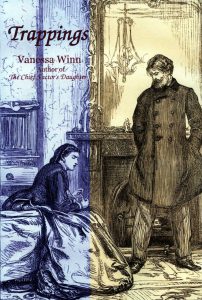 TKM: What was the most fun or most exciting part of writing your novels?
TKM: What was the most fun or most exciting part of writing your novels?
Vanessa: Making historical discoveries about my characters was exciting, and finding out (sometimes much later) that my intuitions about characters or events were right was even more so. After Trappings was released, a descendant of the Work family told me that an 1860s house surviving on the Hillside estate had the same wallpaper, hidden in the attic, as the wallpaper at Point Ellice House. While I’d known that wallpaper had dated the Hillside cottage, I had only guessed at a connection with Point Ellice and Kate. She also shared that the tenant, at the time of the wallpaper discovery, felt a strong benevolent presence in the house.
Years after writing The Chief Factor’s Daughter, I found a NY Times interview with a US Congresswoman who credited her grandmother – the heroine of my novel – with inspiring her political career. I had known there was US politician in the family, but I had not known, when writing the book, that she was Margaret’s granddaughter and had lived with her in childhood. I learned, too, that Margaret became a suffragist and told her granddaughter she would have the vote. It fit so well with my image of her character, that I had tingles reading the interview. It was the first time I had heard Margaret’s voice from someone else – her granddaughter.
TKM: What advice would you give to a writer just starting out?
Vanessa: It might be overstated, but I do feel it’s important to write about what inspires you and what you care about. I don’t, however, think this is the same as the old adage “write what you know.” Learning about your characters is half the fun. We now have scientific studies showing that reading novels builds empathy. I feel it does the same for the writer – taking on another’s perspective and staying with them through their story. Through them, we can share another experience.
TKM: Where is your favourite place to write?
Vanessa Winn: I write at home – I can’t write with a lot of distractions, though I prefer to be near a window, for an outlook other than the screen. Sometimes I write longhand, because the pen flows better than the keyboard. (Home also gives lots of opportunity for tea and snacks, which are essential.) Writing history entails many trips to the libraries and archives, which helps to alleviate the isolation and inspires me surrounded by books.
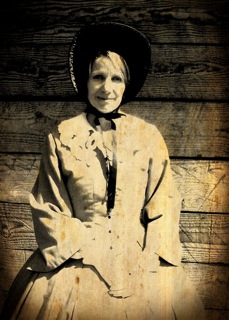
TKM: Do you have another novel in the works?
Vanessa: At the moment I’m in the early stages of two projects. The first is a novel about Princess Louise, one of Queen Victoria’s daughters, who came here as the wife of Canada’s Governor General. She intrigues me as an artist and independent woman who struggled against the constraints of her era and circumstance. I’d like to explore her complicated love of Victoria – both the place and her mother.
I would also like to try my hand at a Young Adult story, written from the viewpoint of the exotic pets of a Royal Navy officer who was stationed to the Pacific northwest. The younger son of an earl, he so loved British Columbia that he chose to settle here. I’m intrigued by the theme of displacement, for both him and his pets. It would be a change of pace and perspective, and it would certainly be refreshing to write something shorter than a novel.
To find out more about Vanessa Winn and her novels, check out my reviews of Trappings and The Chief Factor’s Daughter. You can also drop by Vanessa’s website.

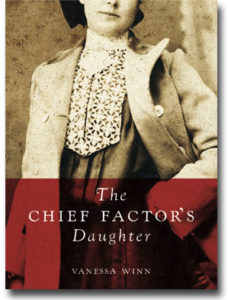
No Responses Yet